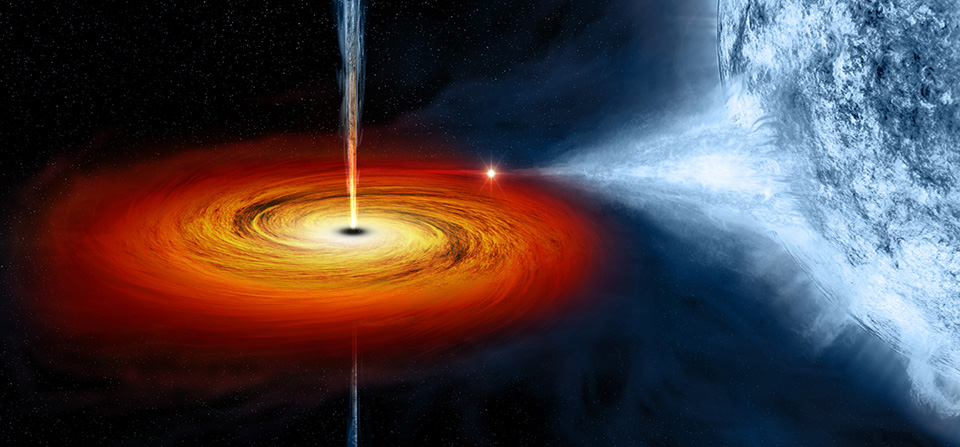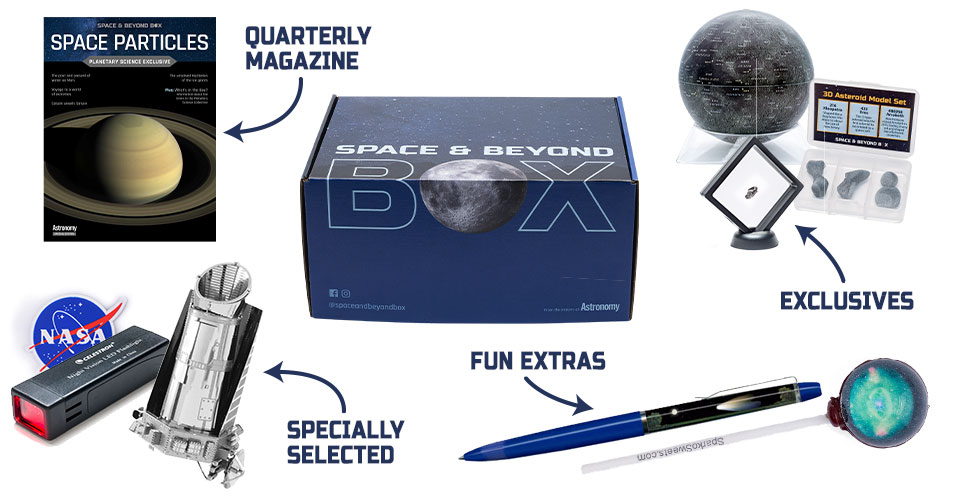The Space & Beyond Blog

NASA/CXC/M.Weiss
The different types of black holes and how they formed
Some black holes are born when a dying star collapses in on itself. Others through mergers. And some may have started off in an even weirder way.
There a four different types of black holes, and each type is a mysterious beast. These gravitational goliaths pack so much matter into such a small space that they form a class of objects unlike any other in the universe. But how do different types of black holes form? To answer that question, we need to first specify which type of black hole we’re talking about. The choices are: stellar-mass black hole, intermediate-mass black hole, supermassive black hole, or, perhaps, primordial black hole.
How do stellar-mass black holes form
The most well-understood black holes, stellar-mass black holes, form when a massive star reaches the end of its life and implodes, collapsing in on itself. If the imploding star is between about eight and 20 times the mass of the Sun, however, it won’t form a black hole. Instead, the collapsing material will rebound off its core, causing it to erupt as a supernova.
But if the collapsing star is greater than about 20 times the mass of the Sun, its core isn’t strong enough to stop the implosion. In fact, there is no mechanism that can prevent such a star from collapsing into a black hole.
Depending on the initial size of the imploding star, the resulting stellar-mass black hole can reach up to about 100 or more times the mass of the Sun.
How do intermediate-mass black holes form?
As the name implies, intermediate-mass black holes fall between stellar-mass black holes and supermassive black holes. This type of black hole is not too small, not too big. But it is rare.
Intermediate-mass black holes are thought to form when multiple stellar-mass black holes undergo a series of mergers with one another. These mergers frequently happen in crowded areas of galaxies.
Merging stellar-mass black holes spend a very long time in the early stages of their mating dance. But eventually, they zip around each other faster and faster until finally coming together and forming a single, larger black hole.
After a number of consecutive mergers, researchers think, these mid-sized beasts can eventually grow from about 100 to around 1 million solar masses (though the dividing line between various classes of black holes is up for debate).
Though conclusive proof of this type of black hole remains elusive, over the past few decades, there have been a number of studies that have uncovered intriguing evidence hinting at the existence of these not-so-big, not-so-small black holes.
Enjoying our blog?
Check out the Space & Beyond Box: our space-themed subscription box!

sHow do supermassive black holes form?
Black holes tend to grow larger and larger through mergers. And that’s expected to be the case for supermassive black holes, too.
Although there are many theories about how this type of black hole forms, one of the most compelling is that they grow so large through a runaway chain reaction of colliding stars and black holes. In this scenario, the seed of the supermassive black hole continually merges and gobbles up more and more material, eventually getting so massive it “sinks” toward the center of its galaxy.
Along the way, the black hole might join up with more stellar- and intermediate-mass black holes, growing even more massive. But eventually, it will make it to the galaxy’s core (if it didn’t already start there) and continue to gorge on whatever material strays too close. Over billions of years, this process might enable a black hole to grow to millions times the mass of the Sun.
How do primordial black holes form (if they exist)?
Lastly, we’d be remiss if we didn’t briefly discuss a hypothetical type of black hole called a primordial black hole.
As their name suggests, primordial black holes were born when the universe was still young — within a mere second of the Big Bang. This was a time long before stars, galaxies, and other black holes existed.
But primordial black holes wouldn’t have started out as a star anyway. They would have popped into existence when the newly created universe was not yet homogenous and evenly distributed. At this point, some scientists think that certain parts of the universe were unbelievably rich in energy. It’s these tiny, insanely energetic points in space that could have theoretically collapsed directly into primordial black holes. And depending on just how soon after the Big Bang these first black holes formed, they could range from about 0.00001 times the mass of a paperclip to about 100,000 times the mass of the Sun.